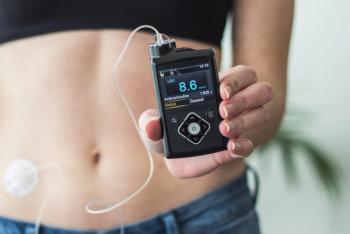
Hospital pharmacy savings achieved through lean management practices
Want to save $1 million annually on pharmacy costs? Go lean, as in lean management. That's what Elkhart General Hospital did with medication administration.
Key Points
Want to save $1 million annually on pharmacy costs? Go lean, as in lean management. That's what Elkhart General Hospital, in Elkhart, Ind., did with medication administration. The result cut IV preparation waste by approximately 90%, redeployed 2 pharmacists to full-time clinical duties, and shaved approximately $1 million from annual operating expenses.
The name "lean management" is a misnomer, said Maria Behr, pharmacy manager. Management sets broad goals such as "improving our medication administration system," she told Drug Topics. The improvements come from the pharmacists, physicians, technicians, nurses, risk managers, clerks, and information technology specialists who play a part in the administration of every medication.
Centralized medication supply
Start with something as basic as drug stocks. The ideal is to have every medication in a central location convenient for nursing, Hawes said. That includes oral formulations, IVs, refrigerated medications, and any equipment needed for administration. At Elkhart General, the reality fell far short.
The hospital was using carts that were filled once every 24 hours. Orders that had to be given between fills were walked from the pharmacy to the floor. IV medications were stored in a separate location and refrigerated medications in another location.
"Nurses were going to multiple locations for every medication pass and still not finding everything," Hawes said. "We tried to create a one-stop shop by going cartless with Omnicell cabinets. You want a one-stop flow of medications."
Creating a one-stop medication flow also meant changing IV fill routines. Mixing IVs a day ahead meant that patients were only using 53% of IVs. The rest were wasted because the order had been changed or the patient discharged. Pharmacy went to a 2-hour fill system.
"Using 2-hour batches decreased our unused IVs, saved money, and saved staff time," Hawes said. "Changing the IV flow let us redeploy a pharmacist to the cardiac step-down team and go from 2 to 1.5 techs. Eliminating cart fills meant that we could send a pharmacist to a medical unit for collaborative rounds. Those pharmacists are working on orders, discharge, antibiotic use, anticoagulation, renal dosing - the kinds of activities that directly improve patient outcomes and save costs."
With the same patient load, acuity mix, and order volume, pharmacy costs fell $1 million annually.
Elkhart General didn't pull those changes out of a hat, Hawes said. It turned to lean-management consultants from Simpler Healthcare. Just as lean management in industry is all about reducing defects in manufacturing, lean management in healthcare is also about reducing defects. That means reducing errors and improving patient outcomes.
"Lean is taking out costs that don't add value to the stream," said Simpler consultant Doug Neal, who worked with Elkhart General. "Patient readmissions, poor clinical outcomes, medication errors, medications not used, pharmacists chasing down drug orders instead of working on patient-care teams - they are all defects. They drive quality down and add costs. Every time you reduce defects, you improve quality. When you look at the entire value stream instead of a single department, higher quality costs less."
Newsletter
Pharmacy practice is always changing. Stay ahead of the curve with the Drug Topics newsletter and get the latest drug information, industry trends, and patient care tips.




































































































































